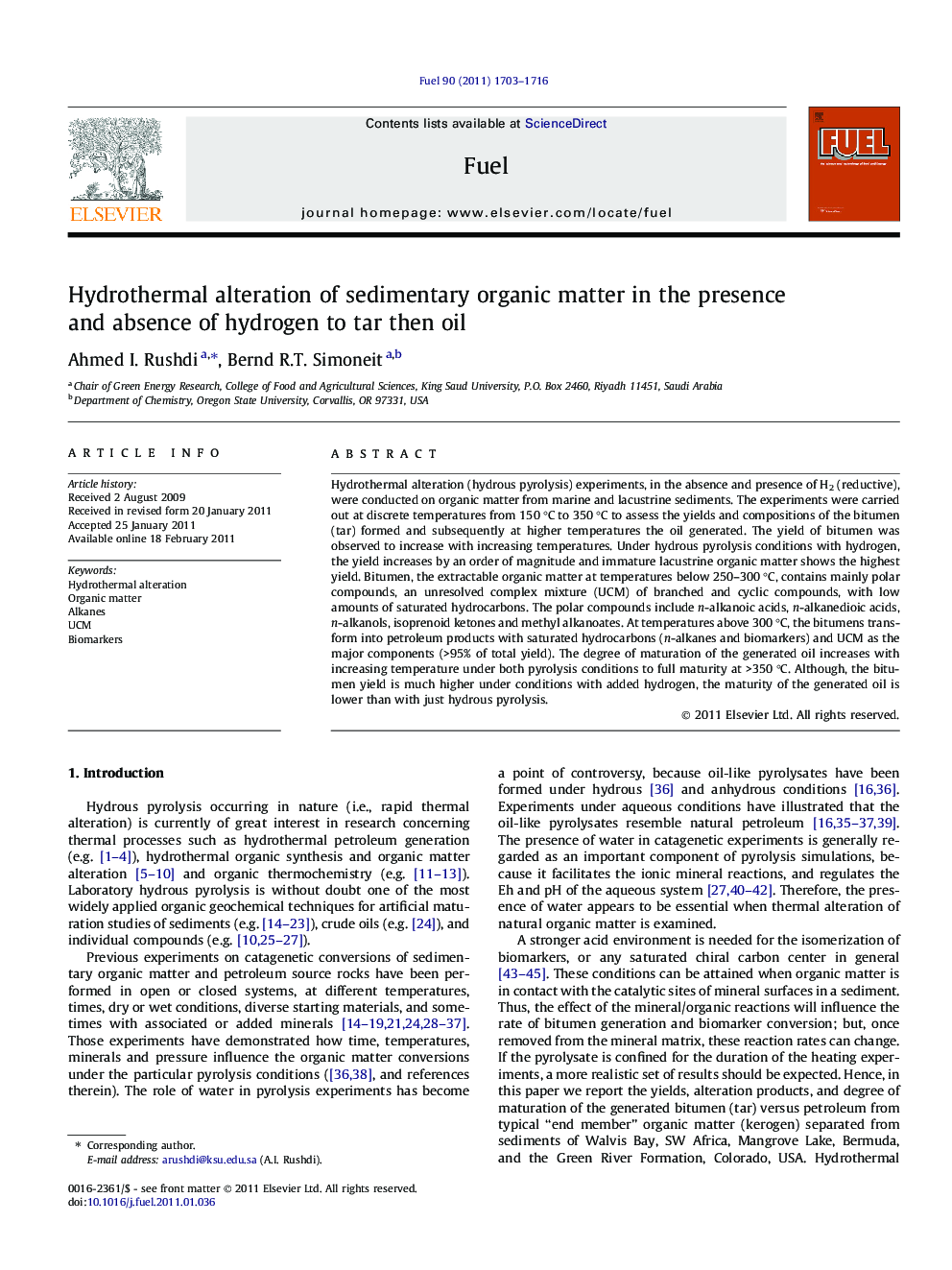| Article ID | Journal | Published Year | Pages | File Type |
|---|---|---|---|---|
| 206740 | Fuel | 2011 | 14 Pages |
Hydrothermal alteration (hydrous pyrolysis) experiments, in the absence and presence of H2 (reductive), were conducted on organic matter from marine and lacustrine sediments. The experiments were carried out at discrete temperatures from 150 °C to 350 °C to assess the yields and compositions of the bitumen (tar) formed and subsequently at higher temperatures the oil generated. The yield of bitumen was observed to increase with increasing temperatures. Under hydrous pyrolysis conditions with hydrogen, the yield increases by an order of magnitude and immature lacustrine organic matter shows the highest yield. Bitumen, the extractable organic matter at temperatures below 250–300 °C, contains mainly polar compounds, an unresolved complex mixture (UCM) of branched and cyclic compounds, with low amounts of saturated hydrocarbons. The polar compounds include n-alkanoic acids, n-alkanedioic acids, n-alkanols, isoprenoid ketones and methyl alkanoates. At temperatures above 300 °C, the bitumens transform into petroleum products with saturated hydrocarbons (n-alkanes and biomarkers) and UCM as the major components (>95% of total yield). The degree of maturation of the generated oil increases with increasing temperature under both pyrolysis conditions to full maturity at >350 °C. Although, the bitumen yield is much higher under conditions with added hydrogen, the maturity of the generated oil is lower than with just hydrous pyrolysis.
